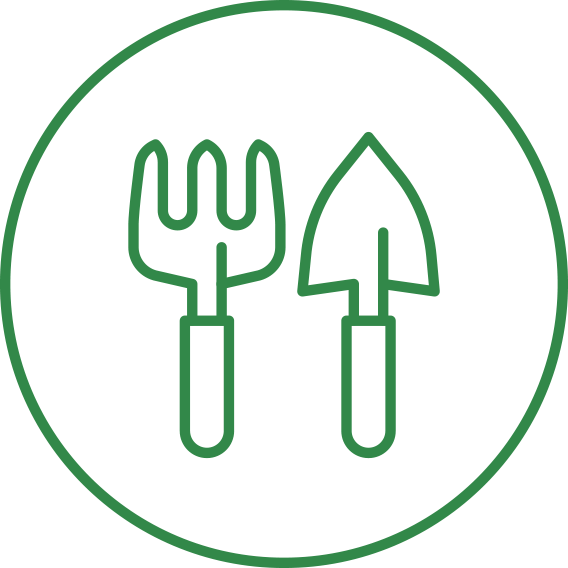Mow Smart
The first step to help provide your lawn with the nutrients it needs to thrive is to mow smart. Not only will you save time, but you’ll save money – decomposing grass clippings can provide nitrogen, phosphorus, and other essential nutrients to your lawn for free. You’ll also promote strong turfgrass roots, healthy blades, and a lush, green, healthy lawn.
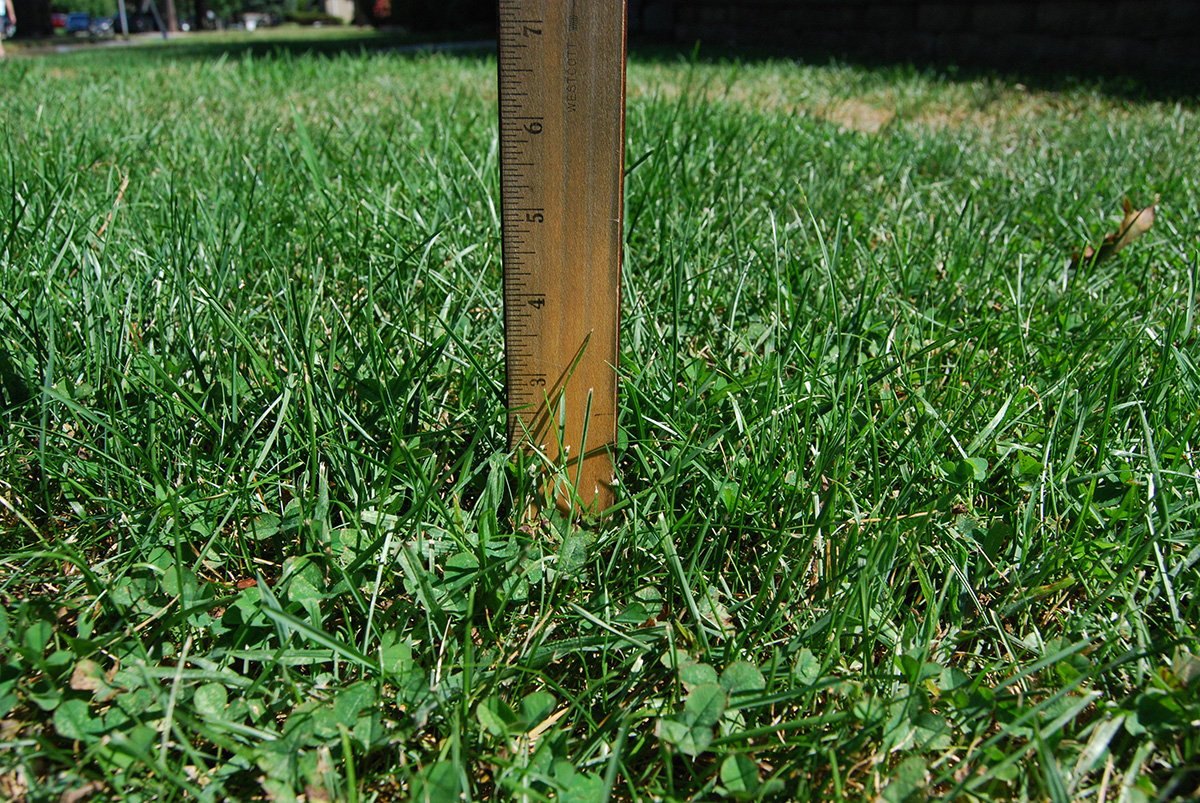
Mowing your grass to a height of three to four inches promotes deep roots that resist drought. | Photo Credit: Janice Milanovich, Illinois-Indiana Sea Grant
Mow your grass to a height of 3-4 inches high. The easiest way to know if you are mowing high is to measure your lawn after mowing. Try to never cut more than one-third of the grass blade’s height during any single mowing. This will allow the grass to develop a deeper root system, help block out weeds, defend against drought and disease, and create finer clippings, which will decompose more readily.
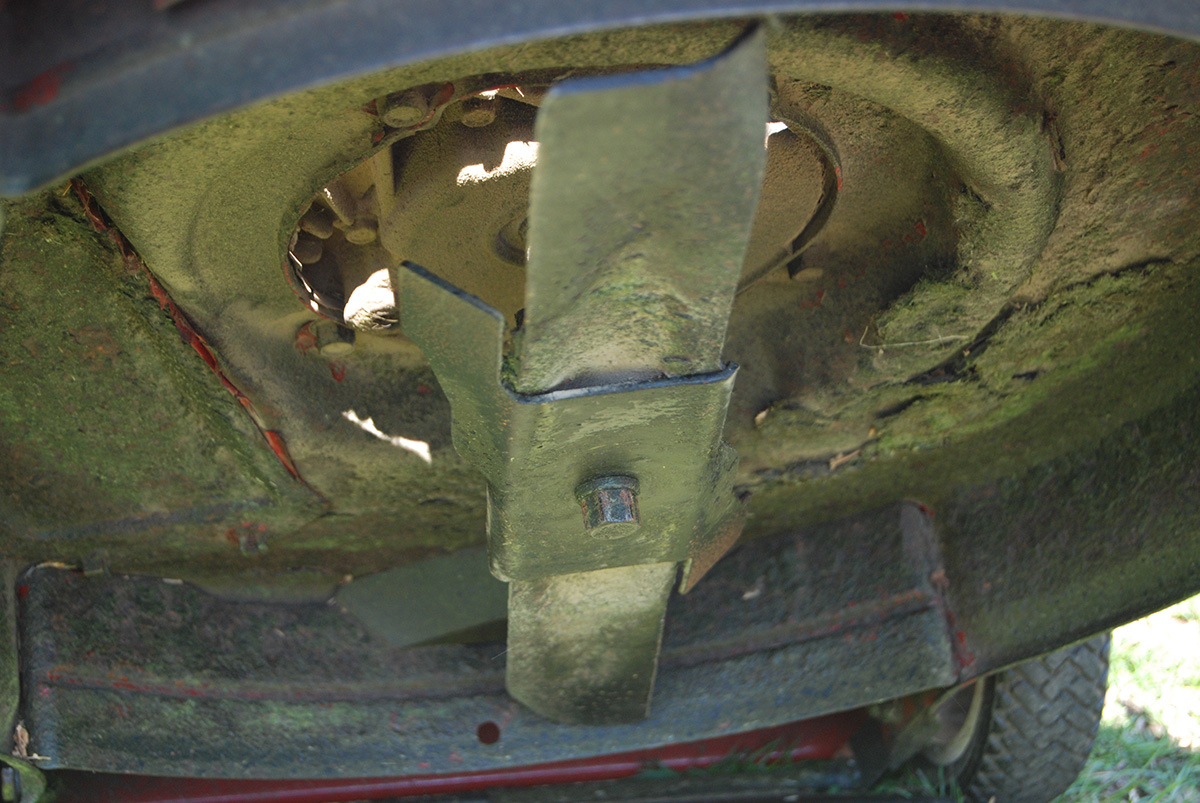
You should remove and sharpen your mower blades twice a year to ensure clean cuts. | Photo Credit: Janice Milanovich, Illinois-Indiana Sea Grant
Keep your lawn mower blades sharp. If you do not already have one, consider making your next lawn mower purchase a mulching mower. Mulching mowers chop up the grass blades into finer clippings that will decompose faster. You may be able to retrofit your current non-mulching mower with a mulching kit.
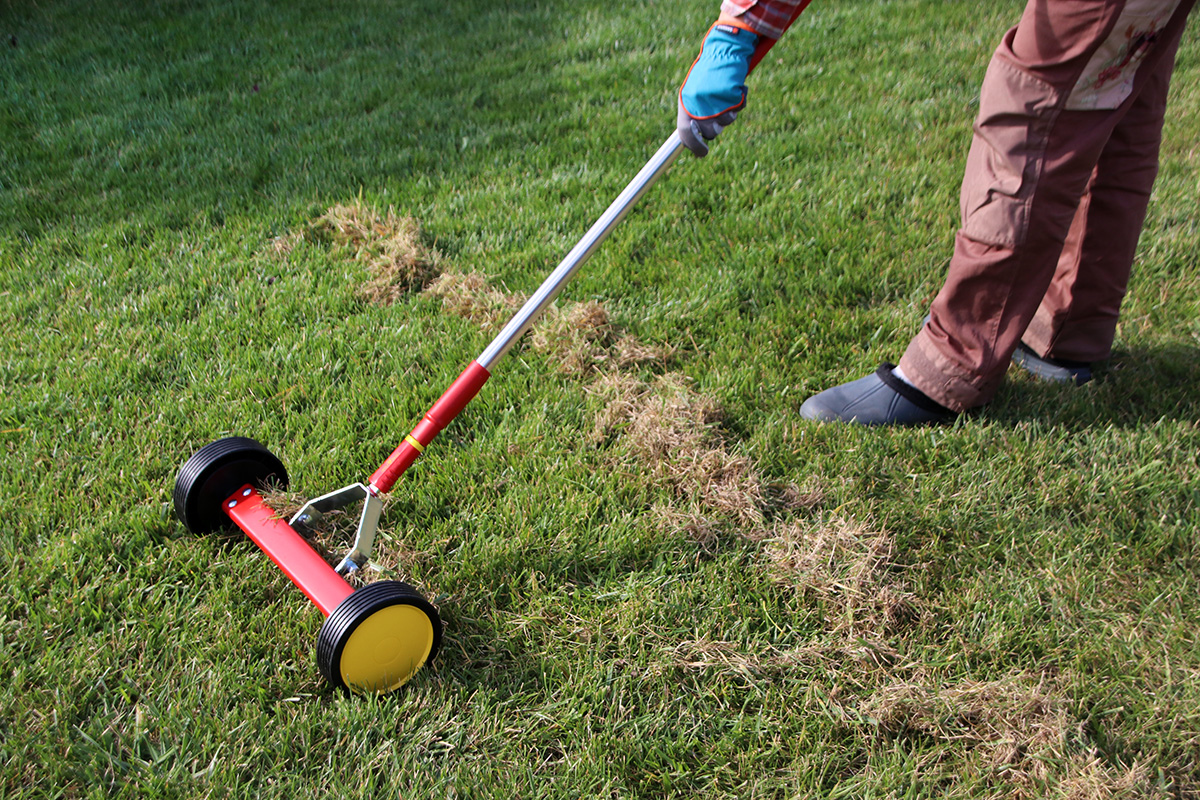
Removing thatch incorrectly can harm your lawn, so don’t be afraid to consult a professional. | Photo Credit: Shutterstock
Remove any existing thatch using a dethatching machine or core aeration machine. Only do this when thatch is over 1/2 to 1 inch thick, and when grass is actively growing and can recover. Returning grass clippings to the lawn does not increase thatch. Excessive thatch buildup can be a symptom of other turf management issues such as a deficiency in the soil microbes needed to help break down organic matter.
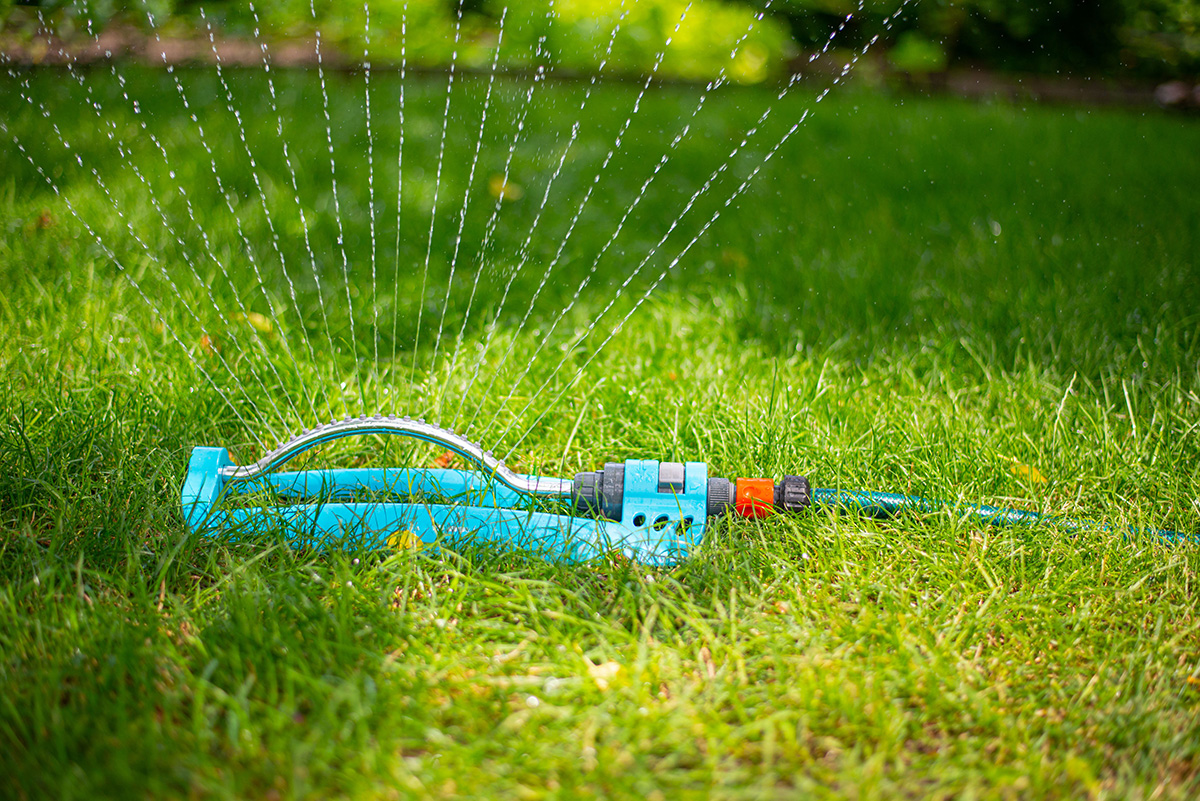
Water your lawn only during the early morning hours to conserve water and prevent disease. | Photo Credit: Shutterstock
Avoid over-fertilizing or over-watering your lawn. Both can have negative impacts on local water quality, and neither will make your lawn healthier. Over-fertilizing can burn your lawn, and excess fertilizer pollutes local waterways. Over-watering wastes water and can leave your lawn vulnerable to lawn pests and diseases. Fertilize according to soil test results, and water no more than 1 inch per week (including rainfall).
“Let It Lay”
Rather than bagging your lawn clippings, just leave them there. Not only will you save mowing time and disposal/compost costs, you will also save on fertilizer costs. The decomposing grass clippings will release nitrogen, phosphorus, and potassium as well as other elements that will help feed your lawn. The clippings will also lead to an increase in earthworm activity, which will help improve soil aeration.
To recycle your grass clippings, you only need the most basic of lawn care on a regular basis.
Sometimes your lawn just gets away from you and grows too tall to mulch. In those situations, consider doing a few passes spread out over a couple of days, lowering the mower deck each time. This will reduce stress on the turf grass and provide a cleaner looking cut. Alternatively, use the grass clippings around flowers, garden plants, and shrubs (as long as the grass was not recently treated with herbicides or other pesticides). There may be cases when you should bag your clippings, such as if your grass is heavily infected with a fungus. In that case, do not use them as mulch or in your compost pile.
Leave the Leaves
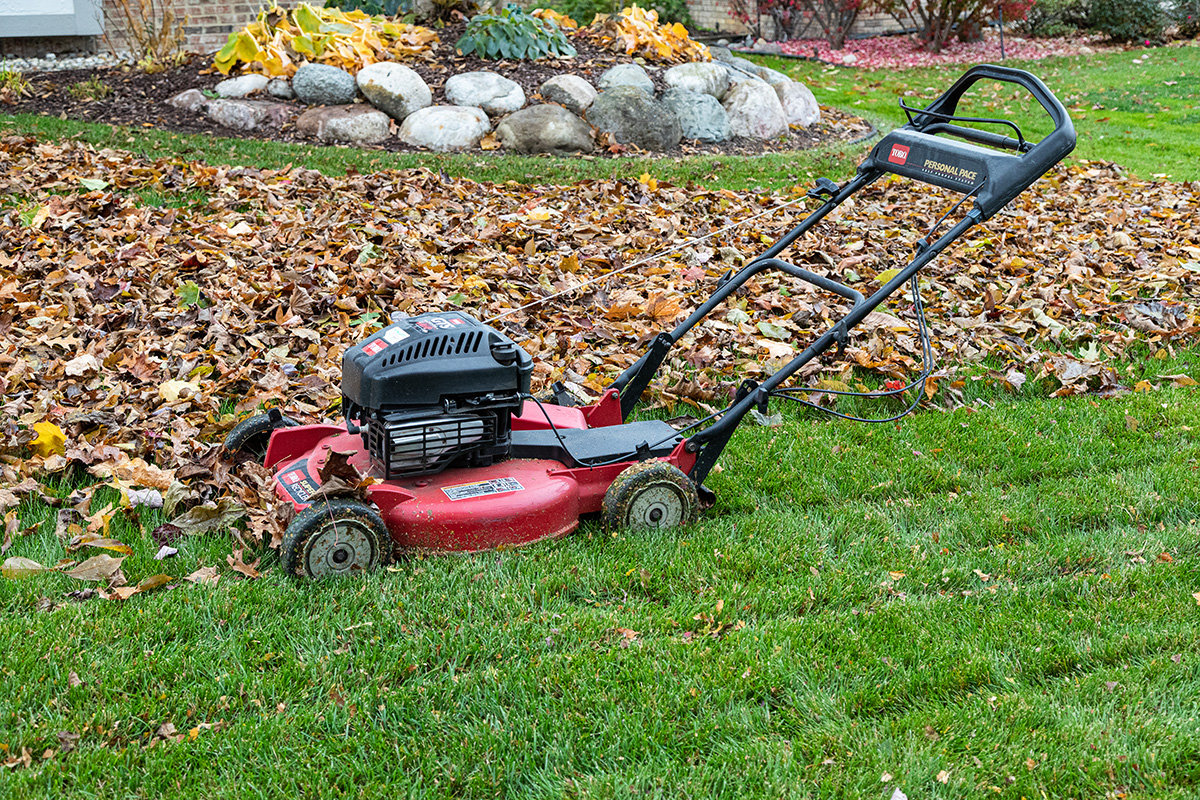
Mulching fallen leaves with a mulching lawnmower cuts down on raking effort and will add nutrients back to your lawn. | Photo Credit: Shutterstock
Leaves can add excess nutrients like phosphorus into our waterways. Excess nutrients pollute water bodies and can lead to harmful algal blooms. They can also clog storm sewers and pipes, causing local flooding. Keeping leaves out of storm sewers provides many homeowner and environmental benefits.
But how do you sustainably deal with leaves? Skip the rake and use your mower to break leaves down to smaller pieces. Mulching leaves is a cost effective and time saving way to sustainably manage your landscape in the fall. Both in your lawn and on your flower beds, mulched leaves improve the soil and add nutrients to your landscape. Done regularly, your lawn can absorb up to six inches of fallen leaves. Mow high and weekly in a criss-cross pattern to break the leaves down into small enough pieces to fall between the blades of grass. If you have too many mulched leaves, add them to your flower beds or compost bin.
To learn more about research and extension related to mulching leaves, visit the Dig Deeper page.



